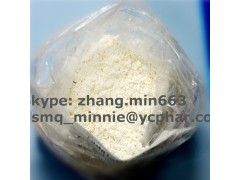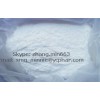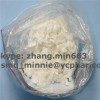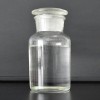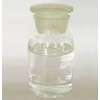product Name: Orlistat
Synonyms: (S)-2-FORMYLAMINO-4-METHYL-PENTANOIC ACID (S)-1-[[(2S,3S)-3-HEXYL-4-OXO-2-OXETANYL]METHYL]-DODECYL ESTER; RO-18-0647; (-)-TETRAHYDROLIPSTATIN; N-FORMYL-L-LEUCINE (1S)-1-[[(2S,3S)-3-HEXYL-4-OXO-2-OXETANYL]METHYL]DODECYL ESTER; XENICAL; (-)-Tetrahydrolipstatin(EquivalentToOrlistat); Orlipastat; (1S)-1-{[(2R,3S)-3-hexyl-4-oxooxetan-2-yl]methyl}dodecyl N-formyl-D-leucinate; [(1S)-1-[[(2S)-3-hexyl-4-oxo-oxetan-2-yl]methyl]dodecyl] (2S)-2-formamido-4-methyl-pentanoate
CAS Registry Number: 96829-58-2
Assays: 99%
Packaging: 1kg/Aluminum foil bag
Molecular Formula: C29H53NO5
Molecular Weight: 495.7348
Appearance: White or white crystalline powder
Basic Description:
Orlistat (also known as tetrahydrolipstatin) is a drug designed to treat obesity. It is marketed as a prescription drug under the trade name Xenical by Roche in most countries, and is sold over-the-counter as Alli by GlaxoSmithKline in the United Kingdom and the United States.Its primary function is preventing the absorption of fats from the human diet by acting as a lipase inhibitor, thereby reducing caloric intake. It is intended for use in conjunction with a healthcare provider-supervised reduced-calorie diet.
Orlistat is the saturated derivative of lipstatin, a potent natural inhibitor of pancreatic lipases isolated from the bacterium Streptomyces toxytricini. However, due to its relative simplicity and stability, orlistat was chosen over lipstatin for development as an anti-obesity drug.
The effectiveness of orlistat in promoting weight loss is definite, though modest. Pooled data from clinical trials suggest that people given orlistat in addition to lifestyle modifications, such as diet and exercise, lose about 2-3 kilograms (4.4-6.6 lb) more than those not taking the drug over the course of a year.Orlistat also modestly reduces blood pressure, and appears to prevent the onset of type 2 diabetes, whether due to weight loss itself or to other effects; in a large randomized controlled trial, orlistat was found to reduce the incidence of diabetes by nearly 40% in obese people.
Orlistat is notorious for its gastrointestinal side effects (sometimes referred to as treatment effects), which can include steatorrhea (oily, loose stools). These decrease with time, however, and are the most frequently reported adverse effects of the drug.In the United States and the European unio, orlistat is available for sale without a prescription. Over-the-counter approval was controversial in the United States, with consumer advocacy group Public Citizen repeatedly opposing it on safety and efficacy grounds.Generic formulations of orlistat are available in some countries. In Australia it is listed as an S3 medication, which means it's available over the counter in pharmacies.
At times, such as in spring 2012, orlistat has come into short supply, with consequent price increases because of nonavailability of one of the drug's components.
Medical uses
Orlistat is used for the treatment of obesity. The amount of weight loss achieved with orlistat varies. In one-year clinical trials, between 35.5% and 54.8% of subjects achieved a 5% or greater decrease in body mass, although not all of this mass was necessarily fat. Between 16.4% and 24.8% achieved at least a 10% decrease in body fat.After orlistat was stopped, a significant number of subjects regained weight-up to 35% of the weight they had lost.
The incidence of type 2 diabetes in an obese population over four years is decreased with orlistat (6.2%) compared to placebo (9.0%).Long-term use of orlistat also leads to a modest reduction in blood pressure (mean reductions of 2.5 and 1.9 mmHg in systolic and diastolic blood pressure respectively).

